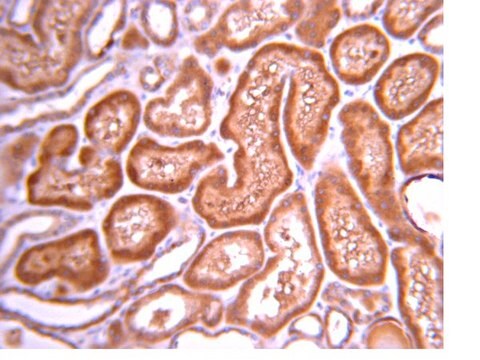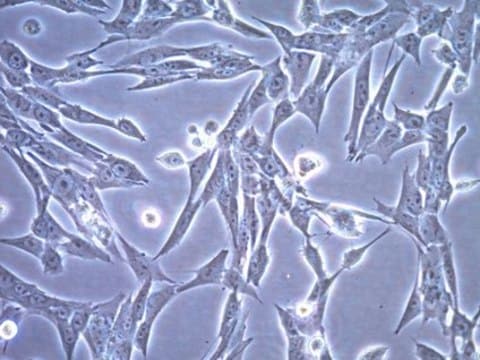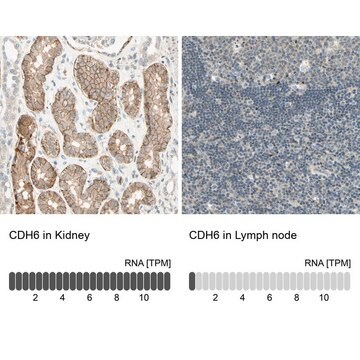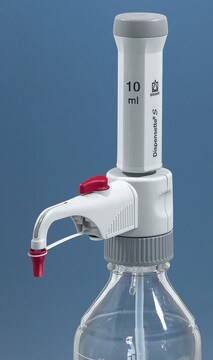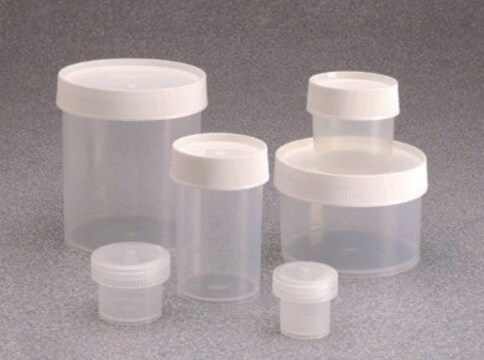SCC127M
SF8628 Human DIPG H3.3-K27M Cell Line
Human
Sinonimo/i:
SF-8628 cells
About This Item
Prodotti consigliati
product name
SF8628 Human DIPG H3.3-K27M Cell Line, SF8628 pediatric diffuse intrinsic pontine glioma (DIPG) cell line harbors the histone H3.3 Lys 27-to-methionine (K27M) mutation and can support research and drug development efforts targeting DIPG.
Origine biologica
human
Livello qualitativo
tecniche
cell culture | mammalian: suitable
Descrizione generale
A somatic mutation of histone H3.3 resulting in a lysine 27 to methionine substitution (H3.3K27M) occurs in 60% of DIPG (2). In H3.3K27M DIPG patient samples, levels of H3K27 dimethylation (H3K27me2) and trimethylation (H3K27me3) are reduced globally. These epigenetic changes are thought to be important factors driving DIPG oncogenesis (2,3,4). Expression of H3.3K27M was also recently shown to be associated with increased levels of H3K27 acetylation (H3K27ac) and recruitment of bromodomain proteins at sites of active transcription (5). Treatment of H3.3K27M DIPG cells with a bromodomain and extra-terminal domain (BET) inhibitor was found to inhibit proliferation and induced differentiation. BET inhibitors are thus a promising therapeutic approach for the treatment of DIPG.
1. Schroeder KM et al. (2014) Pediatr. Res. 75(1-2): 205–209.
2. Lewis PW et al. (2013) Science 340(6134): 857–861.
3. Chan K-M et al. (2013) Genes & Development 27: 985-990.
4. Hashizume R et al. (2014) Nat Med. 20(12):1394-6.
5. Piunti A et al. (2017) Nat. Med. 23(4): 493-500.
6. Mueller S et al. (2014) Neuro Oncol. 16(3): 352-360.
Descrizione della linea cellulare
Applicazioni
Cancer
Oncology
Qualità
• Cells are tested negative for Epstein-Barr virus, HPV-16, HPV-18, Hepatitis A, C, Herpesvirus type 6, 7, 8 and HIV-1 & 2 viruses by PCR
• Cells are negative for mycoplasma contamination.
• Each lot of cells is genotyped by STR analysis to verify the unique identity of the cell line
Stoccaggio e stabilità
Esclusione di responsabilità
Codice della classe di stoccaggio
10 - Combustible liquids
Classe di pericolosità dell'acqua (WGK)
WGK 2
Punto d’infiammabilità (°F)
Not applicable
Punto d’infiammabilità (°C)
Not applicable
Certificati d'analisi (COA)
Cerca il Certificati d'analisi (COA) digitando il numero di lotto/batch corrispondente. I numeri di lotto o di batch sono stampati sull'etichetta dei prodotti dopo la parola ‘Lotto’ o ‘Batch’.
Possiedi già questo prodotto?
I documenti relativi ai prodotti acquistati recentemente sono disponibili nell’Archivio dei documenti.
Il team dei nostri ricercatori vanta grande esperienza in tutte le aree della ricerca quali Life Science, scienza dei materiali, sintesi chimica, cromatografia, discipline analitiche, ecc..
Contatta l'Assistenza Tecnica.

